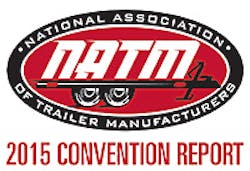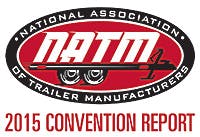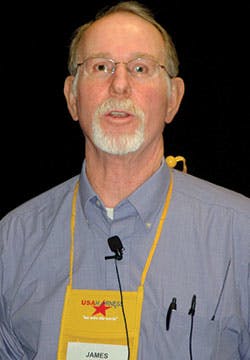THE Society of Automotive Engineers’ (SAE) Trailer Committee has switched gears in its bid to develop a 20,000-pound hitch rating to replace the hitch criteria in J684 (Trailer Couplings, Hitches, and Safety Chains—Automotive Type).
The committee previously was trying to raise a $175,000 budget for the cost of all road testing—to get several vehicles towing different size trailers with different GVWRs, ranging from 2000 pounds to 20,000, and running them on different surfaces to develop a duty cycle for a fatigue test.
“There was a lot of discussion generated by Cushman and several other vehicle manufacturers that have data,” said James Fait of U-Haul International, who is the chairman of the SAE Trailer Committee. “They came back with an earlier thought we had: We have a lot of data. Why don’t we leverage it to develop a standard? We agreed on that. The concept was, ‘Well, if you can use that data you have and develop a fatigue cycle, there’s at least a half-dozen entities that have their own information, and they could do a double check and basically see if that information seems to be agreeable.’ If we’re all getting the same result, there must be some validity to it.”
“As a result, Curt & Cequent’s product experts came together and used test data they have and are offering it to a limited group to analyze the data and go with a hitch standard and proposal, and we’ll circulate the proposal and see what kind of feedback we get. Maybe it’s a doable thing and we don’t have to hit the market for a $175,000 budget. They’ve met behind the scenes and seem to have come to an agreement about the data, and now it’s a massive data-crunching process.”
The Trailer Brake Standard Task Force, with Tim Meckstroth of Dexter Axle taking over as chairman for Larry Revelino, had a WebEx meeting in November and is looking at breaking it into two separate areas: hardware and dynamic road tests.
“It will be objective, performance-based criteria,” Fait said. “There’s been a lot of discussion. The intention of the standard is not to write a standard that causes trailer manufacturer to have to do testing to meet the design. It’s to develop information and overall performance requirements so they can incorporate those and meet those and at the same time have a target so they know what to meet. That’s a little bit challenging to people’s objectives. It should not imply a road test is needed for trailer design criteria.”
He said that of the future documents being considered, the only one that’s really been talked about actively within the Vehicle Dynamics Committee is the Trailer Brake in Turn (BIT) test procedure, and “there isn’t necessarily a consensus on that.”
The committee is also looking at trailer folding tongue strength and trailer tie-down attachment points and strength.
He said the Trailer Committee falls under the Specialized Vehicle and Equipment Council (SVEC).
There are four current documents:
• J684 (hitch and safety chains), reaffirmed in May 2014.
• J2638 (fifth wheel and gooseneck hitch), issued in 2003, and there is now a WIP in process to revise.
• J1853 (winches for boat trailers), reaffirmed in June 2014.
• J2664 (trailer sway stability performance), issued in June 2006, and is in ballot currently to revise.
J1214 (Tire to Body Clearance Check for Recreational Vehicles) was canceled in November 2014 after a lot of discussion.
Fait said the purpose of the SAE J2807: TVTR Committee Of Passenger Car Council is to rate tow vehicles for maximum trailer weight to be towed.
“This really came together because there was so much competition in advertising among pickup manufacturers that GM had one of its lead engineers ask to develop this committee so we had a level playing field for tow weights,” he said. “It’s been a published document since 2008 and was revised in 2010. It will be validated this year with technical changes.
“A secondary purpose is that it may be used to evaluate trailer dynamic performance. It incorporates J684, J2638, J2664, and many other documents, and will offer objective performance requirements for all aspects of towing. There are several minor changes to the technical aspects of the document in final review for a pending ballot this year. There are no new discussions of changes that would affect trailer applications.”
Fait said the SAE Technical Committee’s purpose is to develop industry standards as SAE documents.
“It is a consensus-based process with industry and engineering knowledge,” he said. “It is primarily performance-based requirements. It is design-spec-based only where necessary, such as a light bulb fit in socket. Anyone can attend and provide input at an SAE Committee meeting.” ♦
About the Author
Rick Weber
Associate Editor
Rick Weber has been an associate editor for Trailer/Body Builders since February 2000. A national award-winning sportswriter, he covered the Miami Dolphins for the Fort Myers News-Press following service with publications in California and Australia. He is a graduate of Penn State University.


